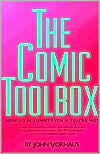I am seriously unfunny. I mean, I enjoy a good joke or comedy routine as much as the next person, but fail when it comes to producing one. It’s embarrassing. I only know one joke, well, actually two but the second one is so silly it doesn’t really count: What’s yellow and not a banana? Oh, wait, it is a banana. Silly.
The only person I’ve met who was more humor-impaired than I is my friend, John. He and I were both technical trainers and decided to spice up our dry material with some jokes. I tried to memorise a few with lukewarm results. But John wrote out jokes on index cards and kept a handful in his shirt pocket. When things seemed slow in the classroom, he’d say, “Must be time for a joke.” He’d pull out his cards and leaf through them. Brilliant! The joke itself wasn’t half as funny as the whole performance of selecting it.
I don’t have any ambitions to write for a sitcom or do standup, but I would like to add more humor to my fiction and poetry. I wanted to improve my comic-relief characters. Plus, I’ve been so impressed by Shirley J. Brewer’s use of humor in her poetry that I want to experiment in that vein. But how?
What a joy and relief, then, to stumble on John Vorhaus’s book! It is just what I needed.
He takes a two-pronged approach. The first prong is to create a safe zone. He uses several techniques to ratchet down the fear of failure. One that is most helpful for me is that he breaks each exercise down into progressively more specific questions. Instead of wracking your brain trying to think of something funny to say, you are given a discreet task or question to answer, with plenty of examples. And Vorhaus himself is seriously funny; it’s hard to feel intimidated when you’re snorting with laughter.
The second prong consists of the tools implied by the title. I love tools. I was surprised to discover that what makes a joke work is essentially what makes a story work. I shouldn’t have been surprised, because of course a joke is a story. Vorhaus isolates the factors that make it funny. Using movies and television shows as case studies, he demonstrates each tool in action.
There must be a hundred tools here. The one I liked best was how to create a comic character. Amid discussion and illustrations, he boils the technique down to five elements. Boom! One minute and I had the bare bones of a comic character. Thirty seconds and I had another. Even better, I could see the gaping holes I’d left in the comic characters in my work-in-progress.
There are sections on parody and satire, situation comedy and sketches, but always tools and more tools. This book delivers on its promise: the subtitle is How to Be Funny Even If You’re Not. Finally there is hope for me! I can see that this is a book I will refer to again and again.
Have you ever wanted to write comedy? What are your favorite comic movies or shows? Who is your favorite comedian?
